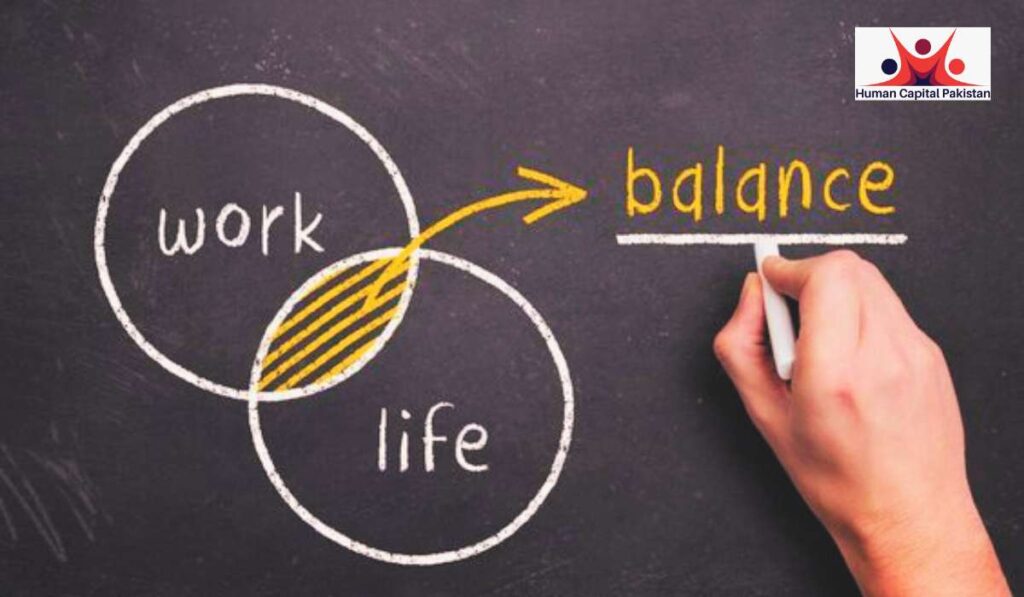By Maham Bajwa
“Success is not in what you have, but who you are.” – Bo Bennett
Have you ever wondered what the secret to success is? With so many influencers, motivational speakers, podcasts, and self-help books, it has become difficult to narrow down the true formula to success. My Goal with this article is to reflect on what success looks like today, explore how its meaning has evolved over the years, and explain why understanding genuine success is more crucial than ever. Along the way, I’ll share some personal tips on how to find your own path to success; something that resonates with your unique values and aspirations.
Table of Contents
- How Do You Describe Success?
- What Success Looks Like: The Traditional View
- What Success Looks Like: Examples
- What Success Looks Like: The Modern Interpretation
- Personal Fulfillment
- Achieving Personal Fulfilment
- Work-life Balance: Juggling Responsibilities
- How to Achieve Work-Life Balance?
- What Success Looks Like: Risk-Taking
- Health and Wellness: The Foundation of Success
- Success in Relationships: Building Strong Connections
- What Success Looks Like: Personal Growth and Development
- What Success Looks Like: Setting and Achieving Goals
- Importance of Perseverance and Resilience in Achieving Long-Term Success
- What Success Looks Like: Success stories
- Passion and Purpose: Fueling Success
- What Success Looks Like: Aligning Personal Goals with Purpose
- Finding the Answer to What success Looks like
How Do You Describe Success?
Success is a term that resonates with everyone, yet its meaning can vary significantly from person to person. What does success look like? Is it a luxurious car, a big house, or perhaps a thriving career? Or is it something more intangible, like happiness, contentment, and personal fulfilment?
What does success look like in today’s world? Success is more than just “becoming a millionaire”, owning a huge house and a limited edition car. True success comes in the form of personal fulfilment, growth, gaining valuable skills, and making a positive impact on others. Consider this: Can you truly be successful if you have wealth but lack respect? Can you genuinely claim success if you’re not using your achievements to positively influence the world? Most importantly, can you be truly successful if that success hasn’t transformed you into a better person?
Often, we chase success without really understanding what success is or why it is essential. Why is it crucial to understand what success looks like? You can’t find what you’re chasing until you know what you’re looking for. It is only when we understand the true meaning that we can set meaningful goals and work towards a fulfilling life.
In this article, we’ll explore the complex and often impossible-to-understand nature of success, analyze the various key components of ‘what success looks like,’ and provide actionable insights to help you redefine and achieve success on your own terms.
What Success Looks Like: The Traditional View
For decades, the traditional view of success has limited our perception of success, turning us into fools chasing the “American Dream”: owning a home, climbing the corporate ladder, and amassing material wealth. This vision has misguided us for so long, painting success as a tangible, quantifiable achievement, often measured by the size of one’s paycheck or the prestige of one’s job title.
Who can deny the dire consequences of this material rat race? Education has morphed into “how can I make more money,” love has become an “Instagram aesthetic,” and the concept of “home” has been reduced to a collection of items advertisements insist we need. However, as societal values have evolved, so has our understanding of true success. Shiny things come at a price, and the cost of material success is often your happiness. Have you ever noticed how some people remain deeply unsatisfied, lonely, or unhappy despite having money, fame, and wealth? The only thing worse than failure might be finding yourself miserable despite your success.
The relentless pursuit of material gains has left many feeling unfulfilled and disconnected. People have started chasing things instead of dreams. Charity is done for Instagram likes more than the goodness of heart. Where has this led us?
Financial Prosperity: Beyond Numbers

The dire consequences of materialism have led to the realization that there is more to success than just a healthy bank balance. While I won’t deny the importance of financial stability, true success involves more than just accumulating wealth. Financial success provides a sense of security that allows for freedom and the pursuit of passions. It enables you to gain new experiences, like travelling the world and meeting new people, and most importantly, it opens up opportunities for growth and education.
Imagine having the financial freedom to explore distant cultures, learn new languages, or even start your own business. Financial stability is the foundation that lets you take these leaps without the fear of financial ruin. It means being able to invest in your personal development, whether that’s through enrolling in courses, picking up new hobbies, or simply having the time to reflect and plan your future.
What Success Looks Like: Examples
Warren Buffet and J.K Rowling
Take the example of Warren Buffett. His financial discipline and smart investments have made him one of the wealthiest individuals in the world. But Buffett’s success isn’t just about his wealth; it’s about his ability to live life on his terms, pursue philanthropy, and share his wisdom with others. Another example is J.K. Rowling, who transformed her financial struggles into a thriving career through perseverance and strategic financial decisions.
Striking a Balance
It can be hard to find the true meaning behind success in a world where financial security is often seen as the ultimate goal. With every step you take, remember that the true essence of success lies in balancing wealth with personal happiness and fulfilment. Financial prosperity should be a tool that enhances our lives and provides financial prosperity, allowing us to chase our dreams, gain new experiences, and live authentically.
A Shift In Perspective
This realization has sparked a shift in what success looks like. The goal is to chase purpose instead of material success, creating value for the world instead of money for yourself. Society is now moving towards a more holistic approach, where personal well-being, meaningful relationships, and a sense of purpose have become central. Today, defining “what success looks like” is not just about what we accumulate, but about how we grow, contribute, and find joy in our everyday lives.
What Success Looks Like: The Modern Interpretation

Personal Fulfillment
“Success is being able to make a positive impact and helping others create a life where they can do the same” – Said Emily Ketsel in her article “How do you define success”
If you chase something meaningless for too long, you’ll inevitably find yourself feeling drained, exhausted, and lost. Why do you think certain people hate their jobs so much? Why do some people despise their work and feel exhausted, while others start their mornings excited to work unbelievably hard?
The answer is simple: the unhappy (and relatively unsuccessful) ones are those working just for the sake of it, doing a job for money or because “that’s what you’re supposed to do,” whereas the ones who are happy and energetic despite working hard are striving for fulfilment by creating meaning instead of chasing meaningless material success.
For this very reason, in recent years, the definition of “what success looks like” has evolved to include the importance of personal fulfilment. This modern perspective shifts the focus from external achievements to inner peace, happiness, and satisfaction in life. Today, success is no longer just about climbing the corporate ladder or amassing wealth; it’s about how content and fulfilled one feels on a personal level.
Albert Schweitzer once said, “Success is not the key to happiness. Happiness is the key to success. If you love what you are doing, you will be successful.” This quote epitomizes the modern definition of “what success looks like.” Success today is about finding joy and meaning in everyday activities and ensuring that your actions align with your passions and values.
There are many smart people in the world, but not all of them are successful. What differentiates an extremely intelligent yet unsuccessful person from someone of average IQ who manages to reach the apex of success? It’s quite simple: while the unsuccessful person works hard solely to attain money, the successful individual enjoys the journey of working towards their passion.
Take the example of Steve Jobs, who famously said, “The only way to do great work is to love what you do.” Jobs’ relentless pursuit of his passion for innovation and design led to extraordinary professional achievements, but it was his personal fulfilment that drove his success. He found joy in the creative process and in the impact his work had on the world.
Achieving Personal Fulfilment
Personal fulfilment is achieved by aligning one’s actions and goals with their core values and passions. It’s about waking up each day with a sense of purpose and joy, knowing that your efforts contribute to your overall well-being and happiness. Studies have shown that individuals who prioritize personal fulfilment experience lower stress levels, better mental health, and a more positive outlook on life.
The Rise of Mindfulness and Self-Care
Consider the rise of mindfulness and self-care practices in our society. More people are investing time in activities that promote mental and emotional well-being, such as meditation, yoga, and journaling. These practices help create a deeper connection with oneself, allowing people to reach a sense of inner peace and contentment.
- Meditation: Provides mental clarity and reduces stress.
- Yoga: Enhances physical and emotional balance.
- Journaling: Encourages self-reflection and emotional processing.
To achieve personal fulfilment, it’s important to take time to reflect on what truly matters to you. Ask yourself, “What activities make me feel most alive?” and “How can I incorporate more of these into my daily life?” By prioritizing activities that bring joy and aligning your goals with your passions, you can create a life that feels rich and meaningful.
Work-life Balance: Juggling Responsibilities
The modern interpretation of “What success looks like” includes maintaining a healthy work-life balance. It’s about managing time effectively, prioritizing self-care, and nurturing relationships alongside professional responsibilities. As the saying goes, “Balance is not something you find, it’s something you create.” In our fast-paced world, achieving this balance can seem daunting, but it’s essential for long-term success and well-being.
The Parable of Two Lumberjacks
To illustrate this concept, consider the story of the two lumberjacks:
Two lumberjacks were tasked with cutting down trees in a forest. The first lumberjack worked tirelessly, hacking away at the trees with relentless determination. The second lumberjack, however, spent a significant amount of time sharpening his saw before starting. As the day progressed, the first lumberjack grew increasingly exhausted, his progress slowing as his dull saw struggled to cut through the wood. Meanwhile, the second lumberjack, with his sharp saw, worked efficiently and effectively, completing his task in a fraction of the time.
The moral of this story is that no matter how busy you are, you need to create a sense of work-life balance. Taking time out for personal growth and wellness is crucial; without it, you will find yourself exhausted and overworked with little progress in your tasks.
Therefore, the modern interpretation of “what success looks like” recognizes the importance of work-life balance. It encourages individuals to pursue careers that not only provide financial stability but also offer personal satisfaction and room for growth.
How to Achieve Work-Life Balance?

To achieve work-life harmony, it’s crucial to set clear boundaries. Allocate specific times for work and personal activities, ensuring you give undivided attention to both. Incorporate self-care into your daily routine, whether it’s through exercise, meditation, or simply taking breaks to recharge. A study by the American Psychological Association found that individuals who regularly practice self-care report higher levels of happiness and lower levels of stress.
Burnout and stress can severely impact long-term success. Chronic stress not only affects physical health but also diminishes productivity and creativity. According to the World Health Organization, burnout is now recognized as an occupational phenomenon. Employers and employees alike must recognize the signs of burnout and take proactive steps to mitigate it. This includes taking regular breaks, seeking support, and fostering a positive work environment.
Several companies have set exemplary standards in promoting work-life balance and employee well-being. For instance, Google offers various wellness programs, including on-site fitness centres and mindfulness classes, to help employees manage stress. Similarly, Salesforce provides flexible work schedules and remote work options, understanding that a happy employee is a productive one. These initiatives not only enhance employee satisfaction but also contribute to the company’s overall success.
Tips and Strategies to Improve Work-Life Balance
- Prioritize Self-Care: Make time for activities that rejuvenate you, such as exercise, hobbies, and relaxation.
- Set Boundaries: Establish clear boundaries between work and personal life. Avoid bringing work-related stress into your time.
- Time Management: Plan your day effectively, prioritizing tasks and setting realistic goals to avoid burnout.
- Delegate and Collaborate: Don’t hesitate to delegate tasks or seek help from colleagues and family members.
- Nurture Relationships: Spend quality time with loved ones. Strong relationships provide emotional support and enhance your overall well-being.
- Regular Breaks: Take regular breaks throughout the day to recharge and maintain productivity.
- Mindfulness Practices: Engage in mindfulness techniques like meditation or yoga to stay grounded and reduce stress.
What Success Looks Like: Risk-Taking

Success is not ordinary. Therefore, being successful means you lead an extraordinary life. You can’t expect extraordinary results by doing ordinary things, right? I’m sure you’ve seen podcasts and read books about one of the most successful people in the world reaching success after taking major risks; many professionals have left high-paying jobs to start their own businesses or pursue creative passions, finding greater fulfilment in the process. This shift highlights a growing trend where personal happiness and fulfilment are valued as much, if not more, than traditional markers of success.
Health and Wellness: The Foundation of Success
Health is wealth, and true success involves prioritizing physical and mental well-being. It’s about adopting healthy habits, managing stress, and nurturing oneself to sustain long-term success. As the ancient proverb says, “A healthy mind in a healthy body,” underscores the crucial connection between physical fitness and overall success.
Physical fitness significantly impacts mental acuity and productivity. Regular exercise not only strengthens the body but also sharpens the mind. Studies from the Mayo Clinic highlight that physical activity boosts cognitive function, improves mood, and increases energy levels. By incorporating activities like walking, yoga, or strength training into your routine, you can enhance your mental clarity and productivity, ultimately driving your success.
Tips for Maintaining a Healthy Lifestyle

“The greatest wealth is health,” said Roman poet Virgil, and this remains true today. Maintaining a healthy lifestyle amidst a busy schedule can be challenging, but it’s not impossible. Here are some tips:
- Prioritize your health by setting aside time each day for exercise, even if it’s just a 20-minute walk
- Opt for nutritious meals that fuel your body and mind
- Ensure you get adequate sleep to recharge
- Mindfulness practices, such as meditation or deep-breathing exercises, can also help manage stress and improve overall well-being. “The greatest wealth is health,” said Roman poet Virgil, and this remains true today.
Consider the story of Richard Branson, the founder of Virgin Group. Branson attributes much of his success to his commitment to health and fitness. He starts his day with exercise, which he believes keeps him energized and focused. Similarly, Arianna Huffington, founder of The Huffington Post, advocates for the importance of sleep and self-care, especially after experiencing burnout herself. Her company, Thrive Global, emphasizes well-being as a key component of success.
By adopting healthy habits, managing stress, and nurturing your physical and mental well-being, you can sustain long-term success and lead a fulfilling life. Remember, “To keep the body in good health is a duty… otherwise we shall not be able to keep our mind strong and clear,” as Buddha wisely noted. Prioritize your health, and you’ll find that it not only enhances your personal life but also propels your professional achievements.
Success in Relationships: Building Strong Connections
“No man is an island”. Humans are social animals; we don’t function in isolation, we thrive in the presence of other people. So, how can you get a full measure of “what success looks like” until you consider it in the light of successful personal relationships? Successful relationships form the backbone of a fulfilling life. It’s about nurturing meaningful connections with family, friends, and colleagues that provide support, happiness, and a sense of belonging.
What Success Looks Like: Keys to Fostering Positive Relationships

One key to fostering positive relationships is practising empathy. Empathy allows us to understand and share the feelings of others, building deeper and more meaningful connections. Active listening and showing genuine interest in others’ lives can strengthen these bonds. As Maya Angelou beautifully said, “People will forget what you said, people will forget what you did, but people will never forget how you made them feel.”
A lot of the time, bad communication is the major or only reason for a failing friendship, relationship, or marriage. As I said earlier, we are social animals, and we need good relationships to survive. And it happens so that we are also expressive beings; we write poetry and make movies, write drama scripts and make long serials, and what for? because it’s a form of communication.
Therefore, you cannot investigate “what success looks like” without giving importance to communication. Communication is a major cornerstone of successful relationships. Clear, honest, and open communication helps prevent misunderstandings and resolves conflicts effectively. It’s essential to express your thoughts and feelings while also being receptive to others. This mutual exchange fosters trust and respect, crucial elements in any strong relationship.
The best advocate for the need for positive social relationships for success is Oprah Winfrey, who attributes much of her success to the strong support network she has built over the years. From her close-knit group of friends to her professional mentors, these relationships have provided her with guidance, encouragement, and unwavering support. Similarly, Bill Gates often speaks about the significant role his family and colleagues have played in his achievements, highlighting the importance of surrounding oneself with supportive and positive influences.
Empathy and communication are vital for maintaining healthy relationships. Showing understanding and compassion towards others helps build a supportive network that can enhance both personal and professional life. Effective communication ensures that relationships remain strong and resilient, capable of weathering any challenges that arise.
What Success Looks Like: Personal Growth and Development
Life-long Learning

Intellectual growth should commence at birth and cease only at death – Albert Einstein
When you think about “what success looks like”, you automatically also think of education and knowledge, right? Success is synonymous with continuous learning and personal growth. It’s about embracing curiosity, acquiring new skills, and adapting to change in pursuit of self-improvement. One of my favourite quotes is: the more you learn, the less you know. We live in such a media dominated era that we think we know everything, we think we’ve seen everything. Even a 12-year-old teenager thinks he knows enough about the world to live alone and conquer life.
But this is all a facade; we have more information and less knowledge. Educated people may be increasing but true knowledge is in the hands of a few, and those few are the successful ones.
This is why Lifelong learning is crucial for staying relevant in today’s world. The question of “what success looks like” will lead you straight to the importance of knowledge. Why? In today’s fast-paced world, you can not fall back on your knowledge and personal growth; you cannot keep going without taking a pause and sharpening your blade; it will leave you working tirelessly towards a futile end.
In the evolving job market, acquiring new skills and knowledge is essential for remaining competitive. Take the example of a job interview. There will be several other candidates with the same degree or perhaps even the same level of experience. What will give you an edge over them? Your knowledge and skills. Knowledge isn’t just about Academic Education; it’s about personal Capabilities that give you the power of creativity and innovation. Studies have shown that individuals who engage in lifelong learning are more adaptable to change and better equipped to navigate challenges in their careers and personal lives.
Cultivating a growth mindset is key to personal development and being closer to finding “what success looks like”. A growth mindset, as psychologist Carol Dweck coined it, is the belief that abilities and intelligence can be developed through dedication and hard work. By embracing challenges, persisting in the face of setbacks, and seeking feedback for improvement, individuals can overcome self-limiting beliefs and achieve greater success.
Remember, as Henry Ford once said, “Anyone who stops learning is old, whether at twenty or eighty. Anyone who keeps learning stays young.”
What Success Looks Like: Setting and Achieving Goals
Once you have a good idea of what success looks like, you can start working towards it. You move towards success by setting definite, meaningful, and actionable goals and then working towards them consistently.
Turning Dreams into Reality
Success hinges on setting clear, achievable goals and diligently pursuing them. In its practicality, “what success looks like” is simply just about embracing small victories and maintaining resilience when confronted with challenges.
Strategies for Setting SMART Goals and Tracking Progress
Setting SMART (Specific, Measurable, Achievable, Relevant, Time-bound) goals is essential for clarity and focus. Here’s how to effectively structure your goals:
- Specific: Define exactly what you want to achieve.
- Measurable: Establish criteria to track progress and measure success.
- Achievable: Ensure your goal is realistic and attainable.
- Relevant: Align your goal with your values and long-term objectives.
- Time-bound: Set a deadline to create urgency and motivation.
If you ask any successful person what success looks like, he will tell you the importance of tracking progress. With tracking progress comes consistency, and consistency brings you closer to your goals. Tracking progress involves regularly monitoring milestones and adjusting strategies as needed to stay on course.
Importance of Perseverance and Resilience in Achieving Long-Term Success
Think of perseverance and resilience as being the key components of “what success looks like.” It is “the steadfast pursuit of goals despite obstacles or setbacks.” It involves staying committed to your vision and adapting to challenges with determination. Resilience, on the other hand, is the ability to bounce back from adversity stronger than before. Together, perseverance and resilience form the backbone of sustained success.
Do you want to have a clear-cut answer to what success looks like? Follow these tips on how you can instil perseverance and resilience in your attitude:
- Commitment to the Vision: Uphold your commitment to achieving your goals, even when faced with difficulties.
- Adaptability: Embrace change and adjust strategies to overcome obstacles effectively.
- Learning from Setbacks: View setbacks as opportunities for growth and learning rather than failures.
What Success Looks Like: Success stories
Inspirational Stories of Overcoming Setbacks

Many successful individuals have encountered setbacks but turned them into stepping stones for personal and professional growth. If you were to ask any of these people what success looks like to them, they will no doubt tell you that success is something you achieve after countless failures.
- Thomas Edison: Despite numerous failures, Edison persisted in inventing the light bulb, famously stating, “I have not failed. I’ve just found 10,000 ways that won’t work.”
- J.K. Rowling: Rowling faced rejection before achieving global success with the Harry Potter series, demonstrating resilience and determination in pursuing her literary dreams.
- Steve Jobs: After being ousted from Apple, Jobs returned to lead the company to unprecedented success, showcasing resilience and vision in the face of adversity.
By setting SMART goals, maintaining perseverance, and drawing inspiration from those who have overcome setbacks, you can turn your dreams into reality and achieve lasting success.
Passion and Purpose: Fueling Success
If you’re in search of what success looks like, search for it with passion. There is no true success without passion, only hard work and dead ends. When one truly considers what success looks like, he realizes that the secret ingredient to success is passion and purpose. Many people work hard, but some work hard towards something important for them. In turn, this passion and purpose drive them towards success.
How to Identify and Cultivate Your Passions
- Self-Reflection: Reflect on activities that bring you joy and fulfilment.
- Experimentation: Try new experiences and hobbies to uncover what excites you.
- Feedback: Seek input from others on what they see as your strengths and interests.
- Values Alignment: Ensure your passions align with your core values and beliefs.
What Success Looks Like: Aligning Personal Goals with Purpose
Connecting personal goals with a broader purpose enhances motivation and provides a deeper sense of fulfilment:
- Motivation: Goals linked to a greater purpose inspire persistence and resilience in overcoming obstacles.
- Impact: Contributing positively to society through aligned goals fosters a sense of meaning and societal benefit.
- Long-Term Satisfaction: Aligning with purpose-driven goals promotes sustained satisfaction and personal growth.
Success is a Journey: Enjoying the Process
If you ponder upon the question of “what success looks like” as if it’s an exam question, you will never find the answer. Success is not merely reaching a destination but a continuous journey of growth and discovery. It involves embracing challenges, learning from experiences, and finding fulfilment in the pursuit of aspirations.
Importance of Celebrating Milestones and Reflecting on Personal Growth
Celebrating milestones, both big and small, is essential for maintaining motivation and acknowledging progress. As you become more efficient at setting goals and reaching milestones, you will become clearer about what success looks like and how to achieve it.
Here are some tips and strategies:
- Recognition: Celebrate achievements to boost morale and reinforce positive behaviours.
- Self-Assessment: Reflect on personal growth and lessons learned from challenges.
- Setting New Goals: Use milestones as opportunities to set new goals and continue progressing.
- Gratitude for Support: Recognize and thank those who have supported you on your journey.
Finding the Answer to What success Looks like
A Step by Step Process
- Embrace Challenges: View challenges as opportunities for growth and learning.
- Stay Focused: Maintain focus on the present moment while working towards long-term goals.
- Balance: Find balance between striving for success and enjoying life’s experiences.
- Adaptability: Be open to adapting goals and strategies as circumstances evolve.
Make it a habit to Incorporate gratitude, mindfulness, and celebrating milestones into your routine and lifestyle. It is crucial to remember that it’s not the end goal that gives you satisfaction but the journey towards it.
What Success Feels Like

Now that we have reached the end of our investigation of “what success looks like”, I find it necessary to comment on what success may feel like. What success feels like can vary greatly from person to person, but generally, it encompasses a deep sense of accomplishment, fulfilment, and satisfaction:
- Accomplishment: Success often brings a profound sense of achievement, knowing that goals have been met through hard work and dedication.
- Fulfilment: Aligning one’s actions with personal values and aspirations can bring a feeling of inner contentment and satisfaction.
- Gratitude: Successful individuals often feel grateful for the opportunities, support, and experiences that have contributed to their achievements.
- Confidence: Success boosts self-confidence and belief in one’s abilities, reinforcing the notion that goals can be pursued and attained.
- Inspiration: Achieving success can inspire others and foster a desire to continue striving for personal and professional growth.
- Freedom: Success can provide a sense of freedom—financially, creatively, or in terms of personal choices—to pursue new opportunities and experiences.
- Impact: Successful individuals often feel a sense of positive impact or contribution to their communities or the broader world.
- Resilience: Success reinforces resilience, as overcoming challenges and setbacks becomes a testament to one’s ability to adapt and persevere.
What Success Looks Like in One Word
If I were, to sum up success in one word, it would be “fulfillment.” Success, at its core, is about achieving a sense of deep satisfaction and contentment in life, through both personal goals and material success.
Success is not about what you achieve, but more about who you become to achieve it.
Do you want to know the details of custodial parenting?
Read more: What Success Looks Like: Defining and Achieving Success in the Modern Era



